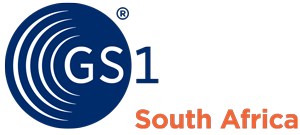How Smarter Vision Systems Could Prevent Costly Automotive Recalls #2
As a follow-up on Part 1 of this weekly series, please see below part 2, which specifically addresses the recalls in the South African Automotive market.
Part 2 – Preventable Recalls in South Africa
Over the next series of blog posts, we’ll be delving into how our vision and inspection solutions can help prevent some of the Automotive Industry recalls that were experienced last year, equipping you with solutions to prevent recalls in the future.
Airbags: Deflating Recalls, Inflating Quality with Final Assembly Verification
Airbags, our crucial guardians in a crash, shouldn’t become the source of our worries. Yet, recalls on defective airbag systems continue to plague the automotive industry, costing lives and eroding consumer trust. But what if we could catch these issues before they reach the road? Enter safety system final assembly verification with advanced vision systems – a game-changer in preventing airbag recalls.
The Alarming Reality:
- Global Impact: In 2023 alone, millions of vehicles were recalled due to airbag issues, raising serious safety concerns.
- Costly Consequences: These recalls cost manufacturers billions, impacting their bottom line and brand reputation.
- Hidden Dangers: Defective airbag systems can malfunction, deploy unexpectedly, or fail to deploy altogether, putting lives at risk.
Where Final Assembly Verification Steps In:
Final assembly verification with advanced vision systems acts as a final safety net, ensuring airbag systems are flawless before vehicles roll off the line. Here’s how:
- Precision Inspection: Our high-resolution cameras and AI-powered algorithms meticulously examine every aspect of the airbag system, from deployment modules and inflators to wiring harnesses and sensors.
- Defect Detection: Even the slightest imperfections, misalignments, or missing components are identified, preventing defective units from reaching the final product.
- Data-Driven Insights: Manufacturers gain valuable insights into potential production bottlenecks and recurring issues by analysing inspection data, enabling proactive corrective actions.
Examples of Preventable Airbag Recalls:
- Airbag Recall: Defective airbags caused safety concerns in certain South African car models last year. Our automated visual inspection systems can ensure these critical components meet strict quality standards before assembly.
- Airbag Debacle: With millions of vehicles recalled globally, this saga could have been mitigated with robust final assembly verification systems catching manufacturing defects early on.
- Faulty Sensor Issues: Faulty sensors can prevent airbag deployment. Our vision systems can ensure proper sensor calibration and functionality, eliminating this potential hazard.
- Incorrect Gas Mixture: Improper gas mixtures can lead to erratic inflation or even ruptures. Our systems can verify the correct gas composition, ensuring optimal airbag performance.
Safety System Vision Inspection Solutions available from Traceability Solutions:
Airbag Canister Inspection: Inflating airbags requires gas generators, which are essential to the operation of car safety systems. All parts must be present and in the right positions for the gas generator to operate properly. The lack of positional accuracy provided by human inspection makes it challenging to achieve strict specification standards. Manufacturers of assemblies and parts that arecritical to safety can check for the presence of parts and automatically confirm their location with our vision systems. In order to determine a pass-or-fail result based on standard standards, vision tools locate the position of the airbag canister in the field of view and adjust to changes in lighting produced by the parts’ curved reflective surface.

Airbag Fabric Inspection: Strict quality requirements are applied to airbags in order to guarantee passenger safety. All safety-critical parts must be checked twice and three times by automakers in order to assure quality, lower warranty costs, and lower recall liability. This is particularly crucial for airbags, which need to be checked for defects in the seams and stitching, as well as holes, rips, and tears that could lead to airbag failure. In manual inspection, these kinds of quality problems are frequently overlooked or difficult to find.

The intricate textile surface of an airbag makes them challenging to program into a conventional machine vision system. Because of the fabric’s stretchability, yarn thickness, and innumerable tiny acceptable changes, the pattern of the fabric can be extremely intricate, and the way airbags look varies greatly.

Airbag Component Inspection: Strict quality requirements are applied to airbags in order to guarantee passenger safety. Quality control is crucial for airbags because even a small production flaw can affect how well the cushion performs, particularly when it comes to the textiles and seams. The final product is influenced by the fabric and seams, so it’s important to check them for flaws like uneven or long stitches and other structural problems. In manual inspection, these kinds of quality problems are frequently overlooked or difficult to find. From the yarns used in weaving until the final sewing operation, meticulous testing and quality control are required. With the help of our vision systems, manufacturers may achieve higher accuracy than with manual inspection by automating the airbag stitching inspection process. Through precise stitch length measurement and other methods, the vision system confirms that airbags adhere to standards.

The Road to Safer Cars:
By integrating final assembly verification with advanced vision systems, manufacturers can achieve:
- Significantly reduce airbag recalls, saving lives and protecting their brand reputation.
- Enhance overall vehicle quality and safety, leading to customer satisfaction and trust.
- Optimize production efficiency by identifying and addressing issues early, minimizing waste and downtime.
Investing in the Future:
The automotive industry is rapidly transforming, and embracing advanced vision systems is no longer optional. The South African automotive industry is poised for growth, but quality control remains crucial. By embracing advanced vision and inspection systems, South African OEMs can:
- Prevent costly recalls and protect their brand reputation.
- Ensure vehicle safety and comply with regulations.
- Boost production efficiency and competitiveness.
Investing in smarter vision systems today is an investment in the future of the automotive industry, one where quality, safety, and innovation reign supreme.
Let’s work together to make recalls a thing of the past.






